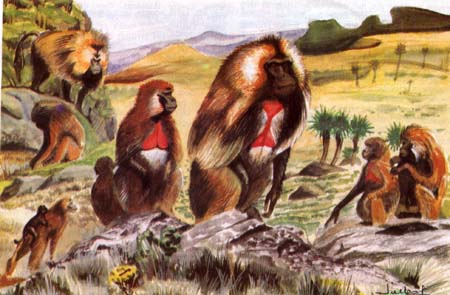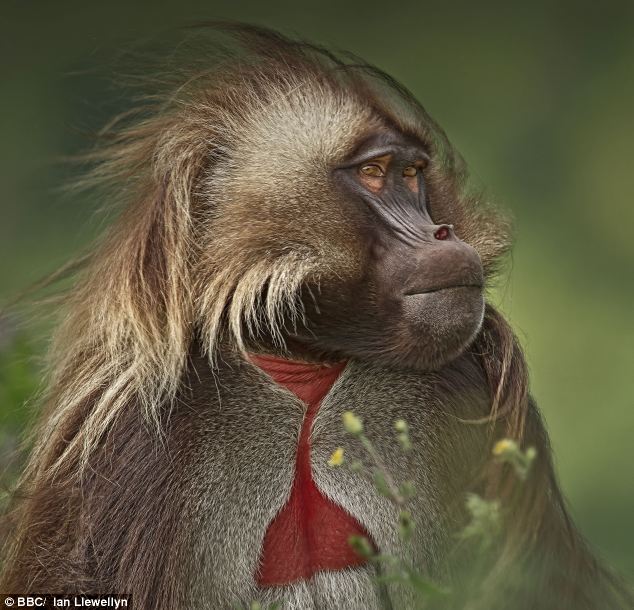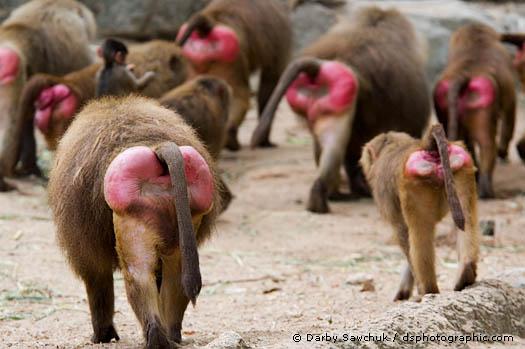Druidus
Keeper of the Grove
(Another long OP for a thread, I know. But it's genuinely interesting, and I'm not forcing you to read if you don't want to. IMO, it's worth reading, and I hope it can prove to be entertaining and thought-provoking for at least a few other people.)
The Naked Ape was a book written by the zoologist Desmond Morris in the 60's. It was meant to be a unique look at the human animal, not from a purely anthropological/sociological perspective, but, rather, treating the human as just another species, just one more animal. Obviously being nearly 60 years old, a lot of the ideas and information in the book is outdated, but it's still an interesting and enjoyable read.
You can read the whole book here, if you are so inclined:
http://www.evolbiol.ru/large_files/naked_ape.pdf
Throughout the book there is a lot of talk about human sexuality, just as a zoologist would write about the sexuality of any other animal. One of the ideas that comes up is that when humans became bipedal, the species needed to develop new physical traits to signify different things on a sexual level. Our quadrupedal relatives among the apes tend to use various sexual signals located around the rear, the buttocks. Red or blue colouring, large size, swelling, etc. all of these are used as indicators of female sexual receptivity in various non-human apes. But when humans started being obligate bipeds, the buttocks became less suitable as prime sexual signalling areas. It's just not the same when standing upright, it's not possible for the buttocks to swell to the same degree, nor is it practical to use colour changes in the area. Besides that, now the vaginal opening is not easily penetrate when the female is standing upright, she'd have to be bent over for penetration to be practically possible.
So the theory goes that instead, evolution had to happen that would promote frontal sexual signals, something to replace quadrupedal buttocks signalling. Morris writes that human breasts became analogues of the buttocks, in order to provide a strong sexual signal that was easily seen despite our new bipedal habits. Both are large, round, symmetrical, globes of flesh, and both are strongly attractive to human males. There's really no other reason for human breasts to be so large; it's not as if other apes have such large breasts. In most apes, the norm is to be quite flat-chested. Morris states that the only real reason for the relative enlargement of breasts in female humans is because they were a new sexual signal that could entice our males while females were upright. And they swell when a female is sexually aroused, as well as flush with red colouring, clearly fulfilling their role a sexual signals.
But it doesn't stop there. Morris also makes the claim that the unusually large and distinct human lips are also a product of sexual selection. While bipedal, human-ancestral males could not see the vaginal labia, they could easily see the mouth of a female. So, instead, our lips became redder, larger, and rounder, simulating, if not perfectly, the vaginal labia. Males have them too only because it's a trait that both sexes had and magnification in one sex would have effects on the other. Still, in females (especially during child-birthing ages), the lips are larger, rounder, and more voluptuous than males, in general. This new trend in human sexual signalling is said to have contributed toward the evolution of human pair-bonding and eventually our semi-monagomy (as well as being the root of kissing - and may have connections to oral sex). Just like breasts, lips swell and redden/darken during sexual arousal, providing important sexual signalling to our distant ancestors.
You may think that it's obvious that breasts are not buttocks, and lips are not labia, and you'd be right. But our ancestors were not consciously deciding that they looked like their counterparts. It was a subconscious assessment of these parts of the body that determined their utility as sexual signals. At first there was a very small similarity, and because we were now upright and the previous sexual signals were no longer practical/adequate, those of us who had lips/breasts that were more like the old sexual signals had a competitive advantage, because these parts of the body were very visible when upright, they were in a prime position to act as sexual signallers accessible from the front of the body. Evolution rarely creates entirely new organs or body parts. It uses what's already there, and in our case, in females, it was breasts and lips. Consider, too, the use of reddening lipstick; a practice that goes far back into our prehistory, a means for females to amplify their sexuality by altering the appearance of their lips. Intriguingly, the most common colour has always been red: the same colour that lips (and labia) normally turn when their owner is sexually aroused. And applying lipstick can also provide the illusion of bigger (or swollen) lips, exactly as they'd do (or labia would do) when sexually aroused.
Excerpt from "The Naked Ape" from the page when this lip/labia and breasts/buttocks idea is first mentioned:
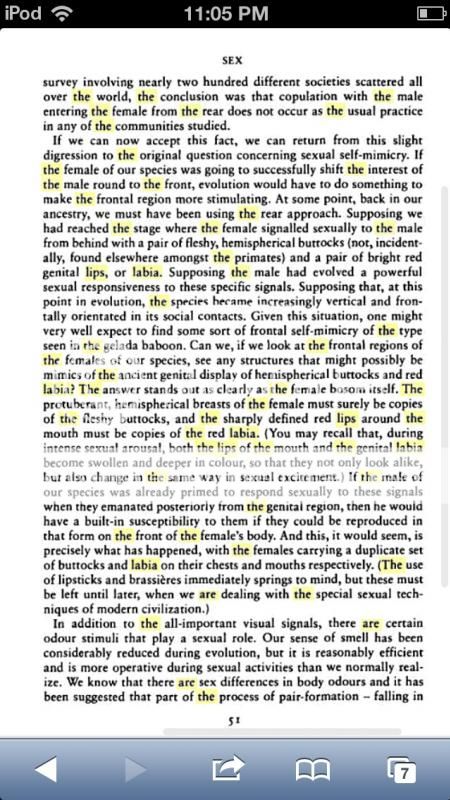
(I hope everyone can see that...)
Now, it's not only females who developed stronger sexual signalling that is visible from the front. Males, too, amplified a trait. Specifically, penis size. We have the largest penis/body-size ratio of any ape. Gorillas have an absurdly tiny penis compared to humans, even without adjusting for size difference, and chimpanzees and orangutan fair little better. Even bonobos are only slightly larger than chimps. This is because penis size became a more potent visual sexual stimuli/signal when we became obligate bipeds. While on all fours, the penis is typically not very visible, so it is not a prime body part to use for sexual signalling, it's more of a tool to get the job done (pleasurably *wink* ). But humans, when standing upright, can easily turn their gaze towards the penis, it's just sitting there, right in the middle of the body, between the head and the feet.
As an aside, it's interesting to note that bonobos have redder/larger lips, larger/rounder breasts, and slightly larger penes than do chimpanzees. Their sexual habits are more similar to ancient humans, too. Humans are an incredibly pro-sexual species. We love sex, we'll have it even if not in oestrus, we don't care! We use it for pair-bonding, pleasure, to reduce tension, and sometimes even to resolve disputes. Bonobos do all of that too. It's fairly intriguing that bonobos and humans possess such close similarities in sexual signalling traits and sexual behaviours. For example, here are comparison pics between chimpanzees and bonobos:
Chimpanzee breasts, clearly rather small and flat:
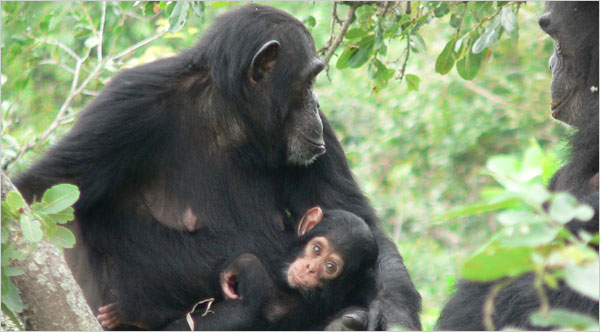

Bonobo breasts, clearly larger and rounder than a chimp's, more "human-like":
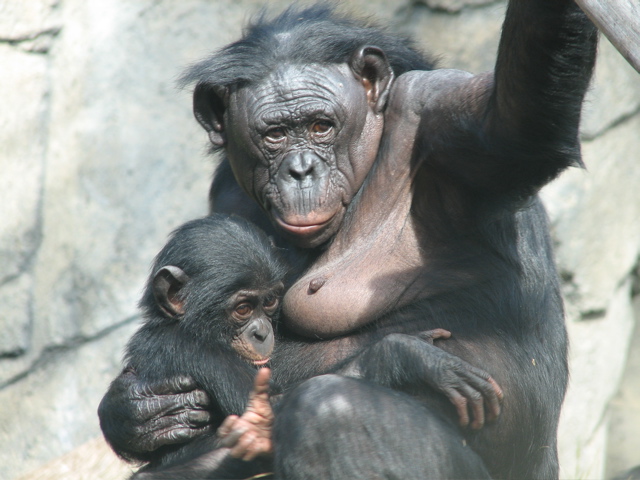

(Above bonobo walking bipedal. It's common in bonobos, they often walk upright, even if not obligately. )
Chimpanzee lips, smaller, less-defined and less red; less human-like:

https://encrypted-tbn1.gstatic.com/...O-ILJMuyhdZlVhyS8-tV5kll0QUyYp_wRLZrKmCl3kqhI. (You'll have to visit the link for this one as I'm maxed out on images per post.)
-Bonobo lips, larger, more defined, and redder; more human-like:
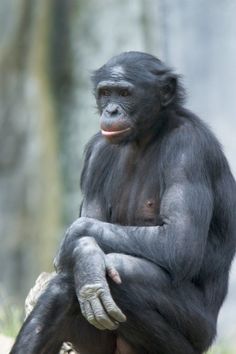
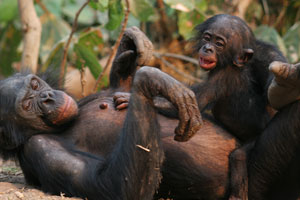
Note that bonobos, while not obligate bipeds, very commonly walk on two legs, whether to carry infants or tools/branches/etc., wade through water, display sexually, or for other reasons. They walk upright a significantly greater proportion of their time than do chimpanzees. As well, they kiss frequently, bond through sex more, copulate face to face more, have more oral sex, as well as doing a number of other "human-ish" things that chimps either don't do, or do much less of. Considering all this, it seems to support the lips/labia breasts/buttocks argument.
Finally, one more link and excerpt:
Excerpt:
The Naked Ape was a book written by the zoologist Desmond Morris in the 60's. It was meant to be a unique look at the human animal, not from a purely anthropological/sociological perspective, but, rather, treating the human as just another species, just one more animal. Obviously being nearly 60 years old, a lot of the ideas and information in the book is outdated, but it's still an interesting and enjoyable read.
You can read the whole book here, if you are so inclined:
http://www.evolbiol.ru/large_files/naked_ape.pdf
Throughout the book there is a lot of talk about human sexuality, just as a zoologist would write about the sexuality of any other animal. One of the ideas that comes up is that when humans became bipedal, the species needed to develop new physical traits to signify different things on a sexual level. Our quadrupedal relatives among the apes tend to use various sexual signals located around the rear, the buttocks. Red or blue colouring, large size, swelling, etc. all of these are used as indicators of female sexual receptivity in various non-human apes. But when humans started being obligate bipeds, the buttocks became less suitable as prime sexual signalling areas. It's just not the same when standing upright, it's not possible for the buttocks to swell to the same degree, nor is it practical to use colour changes in the area. Besides that, now the vaginal opening is not easily penetrate when the female is standing upright, she'd have to be bent over for penetration to be practically possible.
So the theory goes that instead, evolution had to happen that would promote frontal sexual signals, something to replace quadrupedal buttocks signalling. Morris writes that human breasts became analogues of the buttocks, in order to provide a strong sexual signal that was easily seen despite our new bipedal habits. Both are large, round, symmetrical, globes of flesh, and both are strongly attractive to human males. There's really no other reason for human breasts to be so large; it's not as if other apes have such large breasts. In most apes, the norm is to be quite flat-chested. Morris states that the only real reason for the relative enlargement of breasts in female humans is because they were a new sexual signal that could entice our males while females were upright. And they swell when a female is sexually aroused, as well as flush with red colouring, clearly fulfilling their role a sexual signals.
But it doesn't stop there. Morris also makes the claim that the unusually large and distinct human lips are also a product of sexual selection. While bipedal, human-ancestral males could not see the vaginal labia, they could easily see the mouth of a female. So, instead, our lips became redder, larger, and rounder, simulating, if not perfectly, the vaginal labia. Males have them too only because it's a trait that both sexes had and magnification in one sex would have effects on the other. Still, in females (especially during child-birthing ages), the lips are larger, rounder, and more voluptuous than males, in general. This new trend in human sexual signalling is said to have contributed toward the evolution of human pair-bonding and eventually our semi-monagomy (as well as being the root of kissing - and may have connections to oral sex). Just like breasts, lips swell and redden/darken during sexual arousal, providing important sexual signalling to our distant ancestors.
You may think that it's obvious that breasts are not buttocks, and lips are not labia, and you'd be right. But our ancestors were not consciously deciding that they looked like their counterparts. It was a subconscious assessment of these parts of the body that determined their utility as sexual signals. At first there was a very small similarity, and because we were now upright and the previous sexual signals were no longer practical/adequate, those of us who had lips/breasts that were more like the old sexual signals had a competitive advantage, because these parts of the body were very visible when upright, they were in a prime position to act as sexual signallers accessible from the front of the body. Evolution rarely creates entirely new organs or body parts. It uses what's already there, and in our case, in females, it was breasts and lips. Consider, too, the use of reddening lipstick; a practice that goes far back into our prehistory, a means for females to amplify their sexuality by altering the appearance of their lips. Intriguingly, the most common colour has always been red: the same colour that lips (and labia) normally turn when their owner is sexually aroused. And applying lipstick can also provide the illusion of bigger (or swollen) lips, exactly as they'd do (or labia would do) when sexually aroused.
Excerpt from "The Naked Ape" from the page when this lip/labia and breasts/buttocks idea is first mentioned:

(I hope everyone can see that...)
Now, it's not only females who developed stronger sexual signalling that is visible from the front. Males, too, amplified a trait. Specifically, penis size. We have the largest penis/body-size ratio of any ape. Gorillas have an absurdly tiny penis compared to humans, even without adjusting for size difference, and chimpanzees and orangutan fair little better. Even bonobos are only slightly larger than chimps. This is because penis size became a more potent visual sexual stimuli/signal when we became obligate bipeds. While on all fours, the penis is typically not very visible, so it is not a prime body part to use for sexual signalling, it's more of a tool to get the job done (pleasurably *wink* ). But humans, when standing upright, can easily turn their gaze towards the penis, it's just sitting there, right in the middle of the body, between the head and the feet.
As an aside, it's interesting to note that bonobos have redder/larger lips, larger/rounder breasts, and slightly larger penes than do chimpanzees. Their sexual habits are more similar to ancient humans, too. Humans are an incredibly pro-sexual species. We love sex, we'll have it even if not in oestrus, we don't care! We use it for pair-bonding, pleasure, to reduce tension, and sometimes even to resolve disputes. Bonobos do all of that too. It's fairly intriguing that bonobos and humans possess such close similarities in sexual signalling traits and sexual behaviours. For example, here are comparison pics between chimpanzees and bonobos:
Chimpanzee breasts, clearly rather small and flat:

Bonobo breasts, clearly larger and rounder than a chimp's, more "human-like":


(Above bonobo walking bipedal. It's common in bonobos, they often walk upright, even if not obligately. )
Chimpanzee lips, smaller, less-defined and less red; less human-like:

https://encrypted-tbn1.gstatic.com/...O-ILJMuyhdZlVhyS8-tV5kll0QUyYp_wRLZrKmCl3kqhI. (You'll have to visit the link for this one as I'm maxed out on images per post.)
-Bonobo lips, larger, more defined, and redder; more human-like:


Note that bonobos, while not obligate bipeds, very commonly walk on two legs, whether to carry infants or tools/branches/etc., wade through water, display sexually, or for other reasons. They walk upright a significantly greater proportion of their time than do chimpanzees. As well, they kiss frequently, bond through sex more, copulate face to face more, have more oral sex, as well as doing a number of other "human-ish" things that chimps either don't do, or do much less of. Considering all this, it seems to support the lips/labia breasts/buttocks argument.
Finally, one more link and excerpt:
Excerpt:
Take a woman's lips. These puffy, everted organs are unique among primates, Morris tells us. But while men's lips become thinner in adulthood, more like those of monkeys and apes, women's remain pillowy and everted throughout the childbearing years, when they serve as sexual signals. During sexual arousal they become redder, engorged and sensitive, mimicking the genital labia.
Women throughout history have highlighted their lips for sexual purposes, from classical Greeks who applied lip colorings of dyes mixed with human saliva, sheep sweat and crocodile dung to contemporary Americans who pay surgeons to enlarge their lips by inserting synthetic material, freeze-dried skin or body fat.
Women's everted lips are a good example of neoteny, the extension of childlike characteristics into adulthood, an evolutionary process Morris returns to frequently throughout the book. Women have more neotenous physical traits than men do. For example, pound for pound the average adult woman has about twice as much body fat, an infantile trait, as the average man. Women also have higher, more childlike voices and smoother, more finely boned baby faces, traits that Morris maintains evolved to elicit protective responses in their male mates
Last edited:

